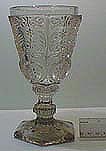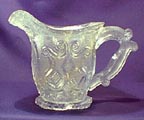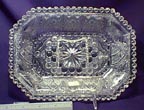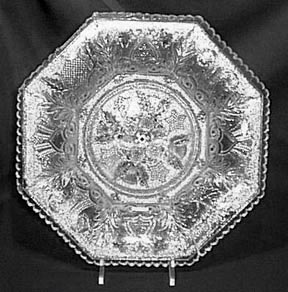First, a definition: Lacy Glass is the term given to the first glass products pressed
in America and on the European Continent. It was made by various glass factories
but commonly mistakenly referred to as "Sandwich Glass", a reference to the
Boston Sandwich Glass Co. But it was not the only glass factory
that made Lacy Glass. It is heavy, thick and crude and was not made in
"sets" or "patterns" of dishes, although the various pieces are known today as a
particular "pattern" name for identification purposes. Any colored pieces found
today would be extremely rare as most of those are
in advanced collections or museums.












